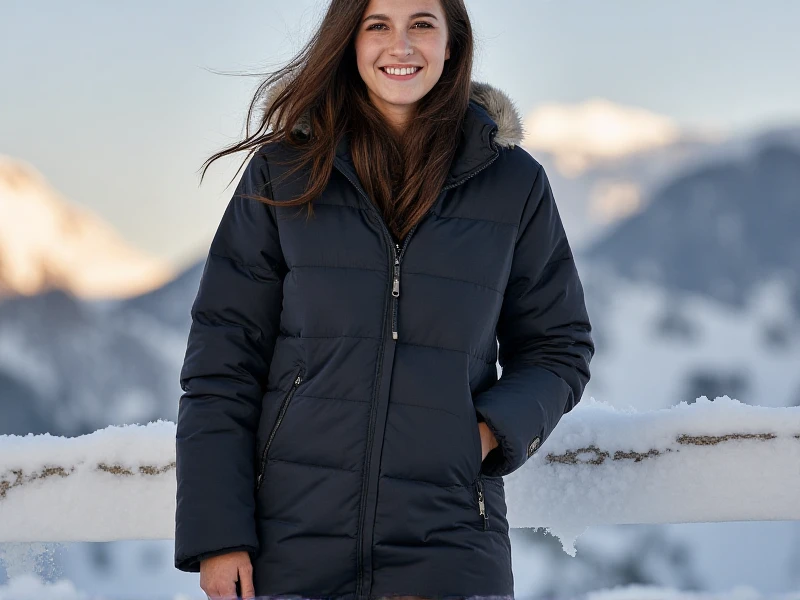Your Ultimate Guide to Finding the Perfect Women's Outdoor Jacket
2025-06-06

Okay, here is an SEO-optimized article focusing on "women's outdoor jacket," written naturally and designed to appeal to readers searching for information and inspiration.
Choosing the right women's outdoor jacket feels fundamentally different from grabbing a coat for the daily commute. It's your essential shield against the elements, keeping you comfortable, dry, and warm whether you're conquering mountain trails, camping under the stars, or simply enjoying a brisk autumn hike. With so many options claiming 'the best,' how do you find the ideal women's outdoor jacket for your adventures? Let's break down the key considerations.
1. Matching the Jacket to Your Activity & Weather:
The perfect women's jacket isn't one-size-fits-all. Think about where you'll wear it most:
High-Intensity Adventures (Hiking, Running, Fast-Paced Activities): Here, breathability is paramount. Look for lightweight, highly breathable shells or windbreakers. Softshell jackets are fantastic choices, offering stretch and good weather resistance without the bulk. Features like underarm vents (zippered PitZips) add crucial temperature control.
Cold and Wet Conditions (Rain, Snow, General Downpours): This demands a waterproof outdoor jacket. Prioritize jackets with robust waterproof membranes (like Gore-Tex, eVent, or similar proprietary tech) and fully taped seams. Insulation usually comes separately (layering underneath) in pure rain shells, or integrated in 3-in-1 systems. Look for helmet-compatible hoods and storm cuffs for ultimate protection.
Chilly, Dry Days or Casual Wear: A warm women's fleece jacket, a classic down or synthetic insulated jacket, or a versatile softshell is often perfect. Down offers unbeatable warmth-to-weight for dry conditions, while synthetic insulation performs better when damp. Fleece provides excellent breathability and mid-layer warmth.
Versatile, All-Round Performance: You can't beat the adaptability of a quality women's lightweight waterproof jacket (a packable hardshell) paired with insulating layers underneath. 3-in-1 jackets offer built-in versatility – wear the outer shell for rain, the inner insulated liner for warmth, or both combined for severe cold.
2. Materials Matter: Protection and Performance
Waterproof/Breathable Fabrics: Technologies like Gore-Tex remain the gold standard for truly reliable waterproofing and breathability, but many brands offer their own high-performing alternatives (e.g., The North Face Futurelight, Patagonia H2No, Columbia OutDry). Look for ratings like waterproofness (e.g., 20,000mm) and breathability (e.g., 20,000gm). For most women's outdoor activities, a rating above 15,000mm is excellent.
Insulation: Down (duck/goose) provides exceptional warmth and packability but must stay dry. High-quality synthetic insulation (like PrimaLoft, ThermoBall, Coreloft) is bulkier but retains heat even when wet – ideal for wet climates or damp adventures. Insulation weight (e.g., 60g, 100g, 800 fill) indicates warmth level.
Windproofing: Often inherent in waterproof or thick softshell fabrics, but crucial for preventing wind chill. Check specifications.
Face Fabrics: Durability needs vary. Hiking might need abrasion resistance; ultralight backpacking prioritizes minimal weight.
3. Fit & Features: Comfort and Functionality
A great women's outdoor jacket isn't just protective; it feels right.
Gender-Specific Fit: The best jackets use women-specific patterning: narrower shoulders, shorter sleeves, articulated elbows, more room through the bust, and contouring at the waist and hips. This prevents awkward bunching and mobility restrictions.
Mobility: Test the range of motion! Raise your arms overhead like you're climbing, stretch forward like you're holding trekking poles. There should be no tightness across the back or shoulders.
Essential Features:
Hood: Look for adjustable hoods that fit over a hat or helmet if needed.
Closures: Reliable water-resistant zippers (like YKK AquaGuard) plus snap/velcro storm flaps provide maximum coverage. Adjustable cuffs (hook-and-loop or elastic) prevent drafts.
Pockets: Handwarmer pockets (insulated if needed), internal zipped pocket for valuables, and potentially chest pockets should be easily accessible, even with a pack harness.
Pit Zips: Game-changers for ventilating heat buildup during exertion.
Hem Drawcord: Adjust the bottom hem to keep wind and cold out.
4. Style & Sustainability: A Modern Touch
Gone are the days of purely utilitarian gear. Today's women's outdoor jackets come in a huge range of colors and styles, from classic outdoorsy vibes to sleek, minimalist designs perfect for urban adventures or the après-hike coffee stop. Don't be afraid to express your personal taste!
Furthermore, environmental consciousness is growing fast. Many brands use recycled materials in their shells and insulations and offer robust repair programs. Look for Bluesign or Fair Trade Certified products where possible.
Finding Your Perfect Match
Start by honestly assessing your primary need: weather protection level, activity intensity, and temperature range. Read quality reviews from trusted outdoor sources. Prioritize fit above almost everything else – a properly fitting, comfortable women's outdoor jacket will inspire you to get out more. Invest wisely in quality construction and technologies; a great jacket is a long-term companion for countless adventures.
Ready to explore the great outdoors confidently? Define your needs, try jackets on for crucial fit and feel, and embrace the journey of finding the women's outdoor jacket that feels like it was made just for you.
Category: